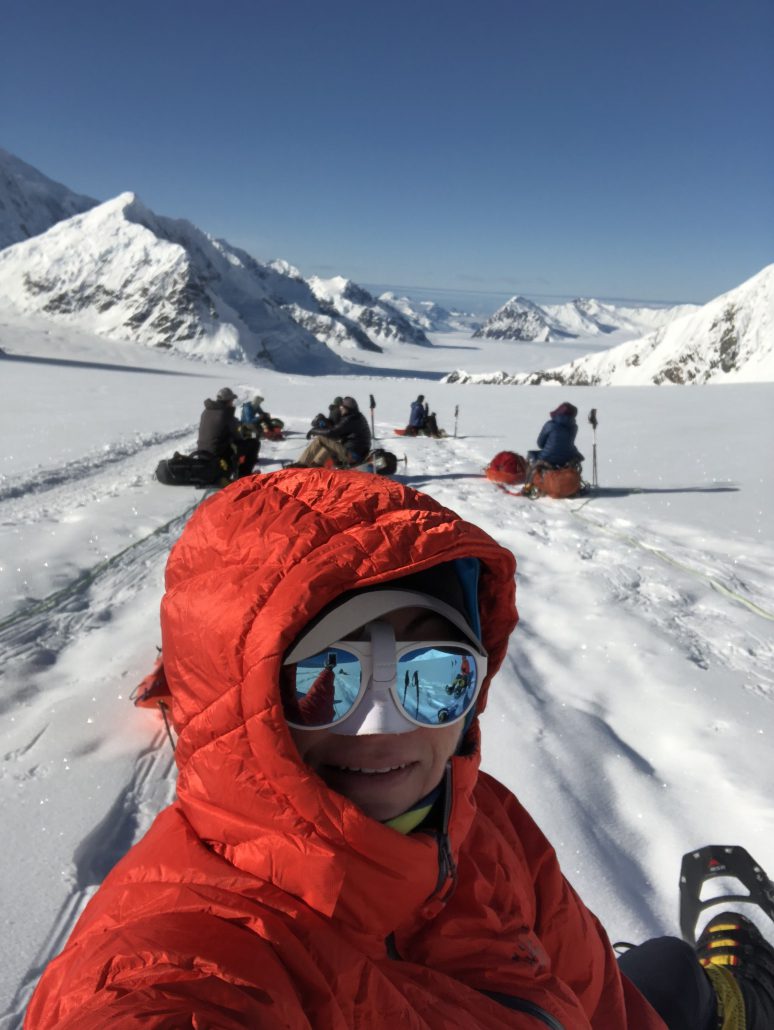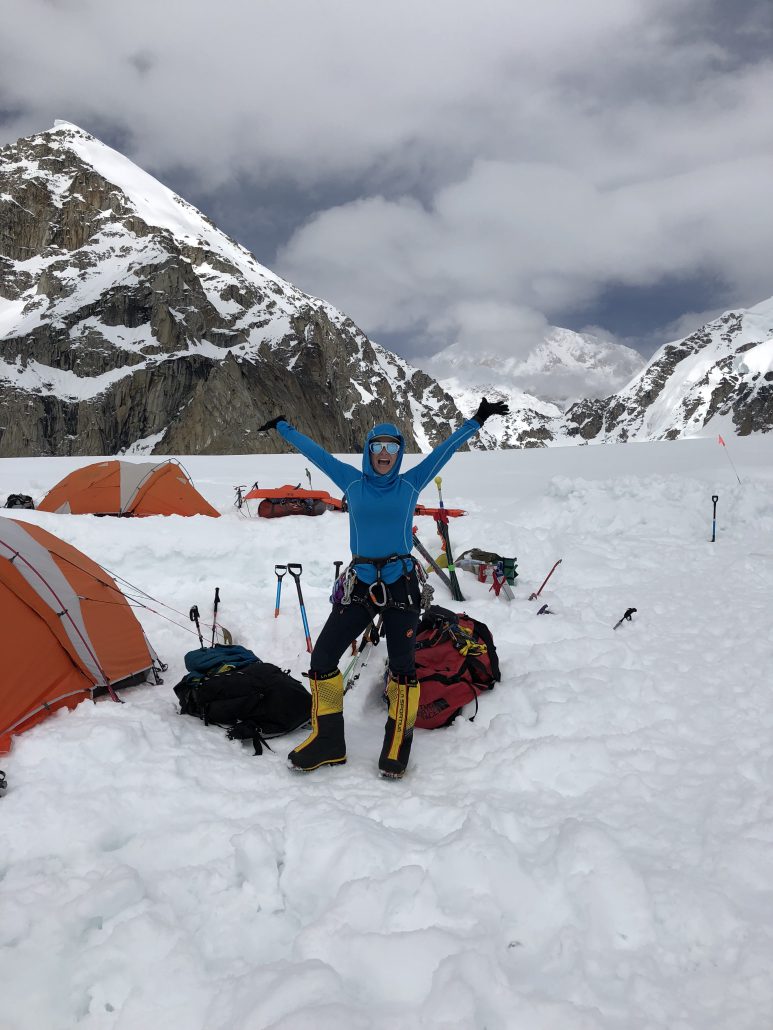A dream fulfilled on Denali
Early in the morning, while most people are still sleeping, Joy McKee climbed out of her tent at an altitude of 17,200 feet. After two and a half weeks of climbing, six months of training and 15 years pursuing some of the world’s tallest peaks, the summit of Denali was only 13 hours climbing and 3,110 vertical feet away.
Last July, McKee, Director of Development for Undergraduate Education, embarked on a nearly month-long journey to climb Alaska’s Denali. At 20,310 feet, it is the tallest mountain in North America and the third-tallest of the seven summits after Mount Everest and Aconcagua in Argentina.
An avid outdoorswoman since childhood, McKee has already climbed Mount Kilimanjaro, Mount Rainier, Tent Peak and others. But Denali would help fulfill her goal of climbing all the high points in the United States, and despite all her experience, proved to be one of her most challenging climbs yet.
McKee started working out with a trainer six months before the climb, mainly to prepare for the heavy 60-pound backpack and 40-pound sled she’d be hauling up the mountain at altitude. Climbers carry their own personal gear as well as gear shared among their climbing group, including food, fuel, tents, climbing supplies and more, enough for 22 days on the mountain. To prepare, McKee climbed the steps of UCLA’s Drake Stadium, the Santa Monica Stairs and other steep routes while wearing a 30-pound vest or carrying a 60-pound bag of dog food, among other exercises.
“I’m not necessarily an athlete – I’ve never done so many planks in my life,” McKee said. “The biggest challenge is you’re training on your own and you can’t really entirely mimic what you’re going to do [on Denali] so there’s a lot of uncertainty in the preparation process.”
On June 18, McKee joined seven other climbers and four guides on the very last expedition of Denali’s 2018 climbing season, which runs from May to July.
During a typical day on the mountain, the group might start climbing around midnight (since Denali is so far north, there is near-constant light during the summer months). Climbing days are often a 10-12 hour push with 10 minute breaks to rest,  hydrate and snack – then pack up and do it all over again. Other days are spent resting, building snow walls, waiting out bad weather or acclimatizing cache climbs – when climbers carry gear up the mountain in multiple loads and bury it in the snow for safekeeping.
hydrate and snack – then pack up and do it all over again. Other days are spent resting, building snow walls, waiting out bad weather or acclimatizing cache climbs – when climbers carry gear up the mountain in multiple loads and bury it in the snow for safekeeping.
When the group (minus three climbers who decided to turn back) reached the “Autobahn,” a section of the final 3,000-foot climb to the summit, they found themselves at the back of, well, a traffic jam of seven teams. The group at the front was struggling to navigate around a steep rock face, forcing all the teams behind them to wait in freezing temperatures.
After two hours of waiting, and another two days hoping for a break in weather, McKee’s guides decided to call off their summit attempt. With a large storm system moving in and a limited window of time that the climbers could stay at high elevation without suffering frostbite or side effects of low oxygen, it was just too risky. McKee and the other climbers were disappointed, but they weren’t surprised, she said.
“When your tent’s shaking from the 30-plus mile per hour winds, you know it’s not happening,” she said. “The bottom line is everyone knows Denali’s this way. The challenge of that mountain is the weather and the extremity of energy that it takes to safely climb.”
As it turned out, they made the right decision. Some of the climbers who’d decided to go for the summit got lost in the storm, and McKee’s guides performed several rescues.
McKee said not summiting doesn’t take anything away from her experience of climbing Denali. She came so close and was proud of her own performance.
“I left nothing on the mountain,” she said. “I could go six more times to that mountain and never make it to the summit, and there’s so many other great mountains out there.”
For McKee, climbing isn’t just about the summit. It’s a chance for her to disconnect from everyday life and quiet her mind in some of the most awe-inspiring places on Earth.
“It’s one of the few ways that not only can you challenge yourself, you can challenge your perspective, you can challenge your thoughts and just remind yourself that we make a lot out of nothing in our everyday lives,” she said. “This true survival piece is one of the few ways you can access something so much beyond yourself.”



